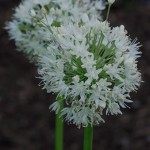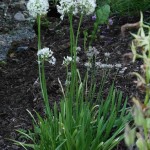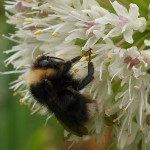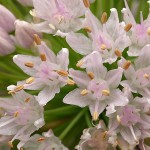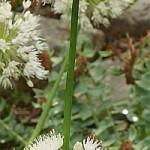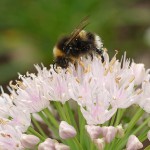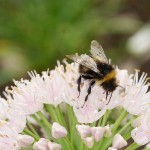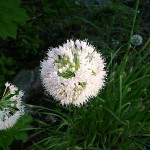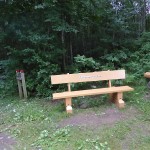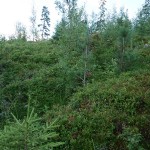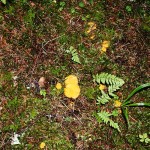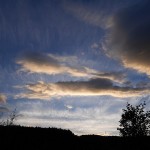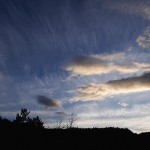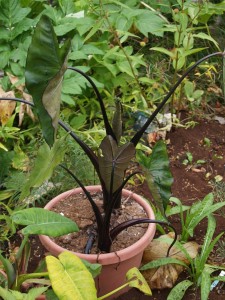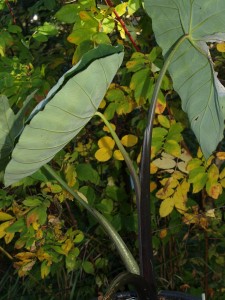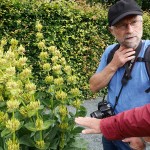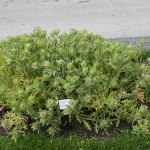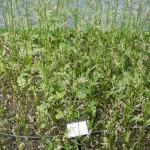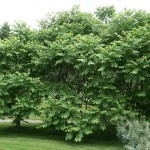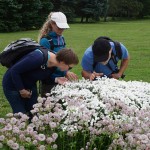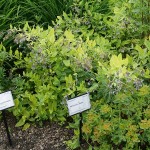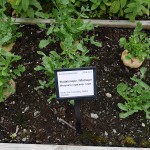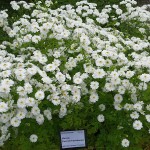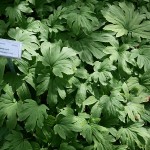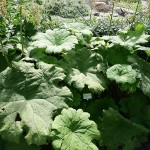This is a nice new edimental Allium, although its identity is still being discussed by the experts!
I received seed of this a few years ago from my friend Hristo Hristov in Bulgaria under the name “mountain slizun” He wrote: “The woman who sent them to me is not an avid collector, so I highly doubt she knew it’s Latin name. I guess the seeds were collected near her city in Kazakhstan (map of the collection location: http://tinyurl.com/hdt5pk6)
Slizun is Allium nutans, but the name she called it could be just how she calls it”
Based on pictures I posted on the Alliorum forum last year,Mark McDonough thought it’s probably a hybrid, although with close affinity to the flowers of Allium flavescens. However, the leaves of my plant are broader than that species. Other possibilities are both Allium senescens and A. nutans both of which are found in Kazakhstan. This year there was some variation in flower colour, one quite pink (I guess I planted several seedlings). Whatever it is, it’s a nice plant.
Monthly Archives: July 2016
Oystercatcher family
Oystercatcher / tjeld family at Grilstad, taken on my bike ride back from work! ;)
Aster tripolium (syn Tripolium vulgare) / sea aster / strandstjerne bottom right in the water near the end :)
Cycle home forage!
Pictures from my cycle home from work with a large detour up into the woods to pick bilberries and fungi!
The video that comes first is the magical moment when I discover a large ring of hedgehog fungi in the forest :)
Wheatfield swifts
I passed this large flock of mainly swifts over a wheat field at Være on my bike ride yesterday :) Click on the link to see the video!
Sparrows working hard removing diamond backs
Here’s more evidence for the importance of having sparrows in our gardens! In the video can be seen both house and tree sparrows (gråspurv og pilfink) feeding on diamond back moth (kålmøll) larvae from kale leaves!
Taro: an excellent edimental house plant
While we’re on the subject of taro (Colocasia esculenta), I’m reminded that it can make an excellent edimental house plant which I put out in the garden in summer! The dark leaved cultivars such as Black Magic are particularly edimental!
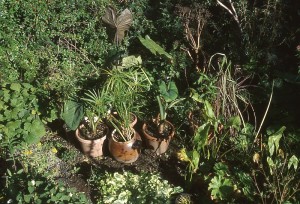
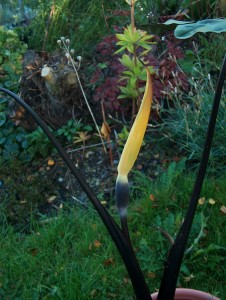

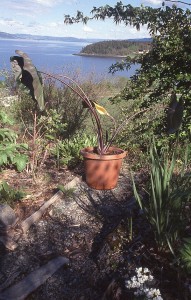
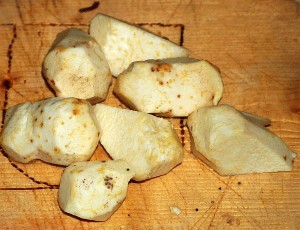
The Lotus effect on taro leaves
I remember posting an article about a new material that had been developed inspired by the water repellent leaves of Lady’s Mantle (Alchemilla spp.). Another species with very high water repellence (so-called superhydrophobicity) is the root vegetable taro (Colocasia esculenta) . Here it is demonstrating what is known as the Lotus effect on my balcony! See more at https://en.wikipedia.org/
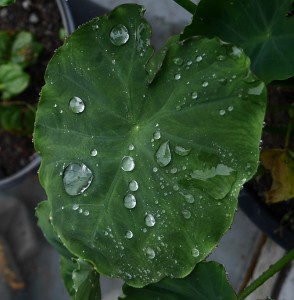
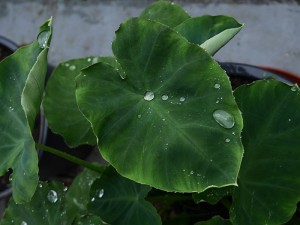
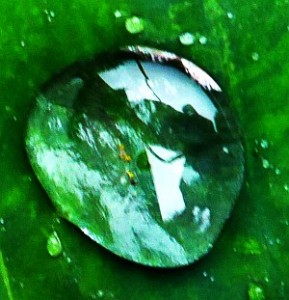
Day 1 of Naturplanteskolen’s Malvik visit
Some pictures from Saturday 16th July in my garden and forage on the shoreline below the house!
Naturplanteskolen at Ringve Botanical Garden
On the final morning of the Naturplanteskolen visit to Norway, we visited the Ringve botaniske hage in Trondheim. We started with the Renaissance garden, comprising a collection of 123 useful plants mentioned in Norway’s first gardening book, Horticultura, from 1694! We then wandered through the arboretum where mainly coniferous trees are planted geographically around the central pond, representing the Arctic Ocean! We stopped at the pond to talk about one of the world’s most useful plants,known as Supermarket of the Swamps in North America, Bulrush, cattails or dunkjevle! We passed a glade of Mandchurian walnuts (no nuts to be seen this year), then on to a naturalistic planting of Hosta, marvelled at the collection of old perennials, had a quick look at some interesting useful plants in the systematic garden, before finally walking through the “Parken” to the music museum from where we said our goodbyes :( See the picture galelry at the bottom of this page!
In 2002 I made a renaissance salad containing 80 of the plants in this garden at the opening ceremony. Here’s a document showing what was included, more information and the Middle Age recipe used:
Finally, here’s a little video showing the bulrush / dunkjevle pollen!
Danish walk down the Homla canyon
On the 2nd day of the Malvik permaveggies course, we walked the Homlastien (path along the mighty Homla river) from the waterfall down to the station at Hommelvik! As always it takes longer than expected and my estimated 4 hours became 6-7 hours with all the stops!
See the pictures here:

